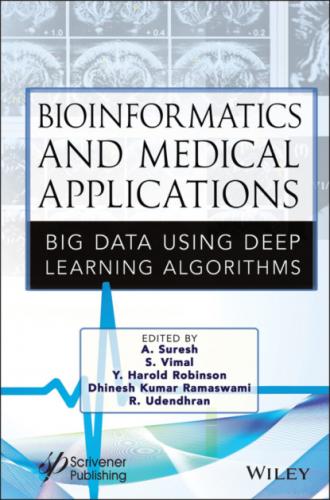Figure 2.3 More sample images of correctly classified and misclassified carcinoma.
In the three types of lung cancer, the efficiency of the unsupervised clustering was maximum in adenocarcinoma and minimum in squamous cell carcinoma. Squamous cell adenocarcinoma requires more images. DCNN helped to correctly classify 70% of lung cancer cells.
2.5 Novelties
AI will not only identify and predict at-risk patients but will also be a large dataset available to hospitals and healthcare providers to identify changes in patient health and medical outcomes, as well as accurate diagnoses. There are cases that use faster and personal support.
Treatment plan especially is provided in the manuscript for patients suffering with chronic diseases. AI information on infection states depends on learning calculations and doctor experienced in the treatment of patients with indications, signs, conclusions, medicines, and comparative results.
Most clinical data fall into a wide range of limited categories, although they are distant and may be limited by potential sampling, but future studies on the adoption of approved standards are not required. This allows AI algorithms to learn information and enhance the creation of reinforcement learning loops.
2.6 Future Scope, Limitations, and Possible Applications
The forthcoming examination is required to investigate how AI can customize treatment choices for singular patients to a clinician. The nature of data that AI gains from is likewise significant and an expected boundary to the far-reaching selection of exactness medication. The size of data needed for deep learning and the variety of strategies utilized makes it hard to obtain an away from of how precisely AI frameworks may function in genuine practice or how reproducible they might be in various clinical contexts.
Forthcoming exploration openings are necessary to address “social inclination” in AI calculations and sufficient advances should be taken to abstain from compounding medical care differences when utilizing AI apparatuses to save patients are famous. Tolerant security should be ensured and more noteworthy straightforwardness into algorithmic. Fairness is expected to guarantee acknowledgment of AI by suppliers and patients.
IoT solutions for healthcare that collect, transmit, and visualize data in complex intelligent systems via wearable and field sensor networks can facilitate analytics, activity detection, and decision-making. AI and ML technologies play a significant role in this transition, but their implementation requires computational power. It is often only available using cloud services.
In fact, with the increasing amount of data generated by sensors, the performance of ML-based cloud processing has several weaknesses for various reasons.
2.7 Recommendations and Consideration
AI in healthcare is ready to bring change and disrupt medical care. While not giving up marketing and profitability of drug addiction is the wisest guide, it balances AI, the need for comprehensive healthcare to plan and manage and reduce potential unexpected consequences.
It is wise to take. For AI, the best solution is to start with a real healthcare issue, involving the relevant stakeholders, first-line users, patients, and their families (including artificial and non-AI options). You need to find a solution and work on it. It is implemented and extended by our five goals: better health, better care experience, doctor health, lower cost, and common rights.
2.8 Conclusions
The nature of administration is significantly influenced by the nature of your internet association, making it difficult to use. Healthcare providers require shorter response times to address potential health risks, especially when performance such as early detection, risk prevention, and activity diagnosis is guaranteed in real time.
Because of the huge measure of individual data that should be overseen, data stockpiling and security are additionally vital when managing medical care. For all of this, choosing purely local administration, especially for mobility, is not yet practical due to limited processing and storage capabilities.
References
1. Azuaje, F., Artificial intelligence for precision oncology: beyond patient stratification. NPJ Precis. Oncol., 3, 6, 2019, https://doi.org/10.1038/s41698-019-0078-1.
2. Bauer, H., Patel, M., Veira, J., The Internet of Things: sizing up the opportunity, McKinsey & Company, New York (NY), 2016, Available from: http://www.mckinsey.com/industries/high-tech/our-insights/the-internet-of-things-sizing-up-the-opportunity.
3. Baloch, Z., Shaikh, F., Unar, M., A context-aware data fusion approach for health-IoT. Int. J. Inf. Technol., 10, 241–245, 2018, 10. 10.1007/s41870-018-0116-1.
4. Choi, H., A Risk Stratification Model for Lung Cancer Based on Gene Coexpression Network and Deep Learning. Applications of Bioinformatics and Systems Biology in Precision Medicine and Immuno Oncology, Research Article | Open Access, BioMed Research International, 2018, 2914280, 11, 2018. 2018 |Article ID 2914280, 11 pages, 2018, https://doi.org/10.1155/2018/2914280, Received 13 Oct 2017| Revised 07 Dec 2017 | Accepted 11 Dec 2017 |Published 16 Jan.\.
5. Deen, M.J., Information and communications technologies for elderly ubiquitous healthcare in a smart home. Pers. Ubiquitous Comput., 19, 573–599, 2015.
6. Gao, W. et al., Fully integrated wearable sensor arrays for multiplexed in situ perspiration analysis. Nature, 529, 7587, 509–514, 2016.
7. Gyllensten, I.C. et al., A novel wearable vest for tracking pulmonary congestion in acutely decompensated heart failure. Int. J. Cardiol., 177, 1, 199–201, 2014.
8. Haghighat, M., Abdel-Mottaleb, M., Alhalabi, W., Discriminant correlation analysis: real-time feature level fusion for multimodal biometric recognition. IEEE Trans. Inf. Forensics Secur., 11, 9, 1984–96, 2016.
9. Kadir, T. and Gleeson, F., Lung cancer prediction using machine learning and advanced imaging techniques. Transl. Lung Cancer Res., 7, 3, 304–312, 2018, Retrieved from http://tlcr.amegroups.com/article/view/21998.
10. Kumar, S. and Maninder, S., Big data analytics for healthcare industry: impact, applications, and tools. Big Data Min. Anal., 2, 48–57, 2019, 10.26599/BDMA.2018.9020031.
11. Li, Y., Ge, D., Gu, J. et al., A large cohort study identifying a novel prognosis prediction model for lung adenocarcinoma through machine learning strategies. BMC Cancer, 19, 886, 2019, https://doi.org/10.1186/s12885-019-6101-7.
12. Li, Y., Wu, et al., Wiki-Health: A Big Data Platform for Health Sensor Data Management. in: Cloud Computing Applications for Quality Healthcare Delivery, A. Moumtzoglou, A. Kastania (Ed.), pp. 59–77, IGI Global, 2014, 10.4018/978-1-4666-6118-9.ch004, 2014.
13. Lisa, A. and Gustafson, D.H., The Role of Technology in Healthcare Innovation. A Commentary. J. Dual Diagn. Author manuscript; available PMC 2014 Jan 1. 2013, 9, 1,
